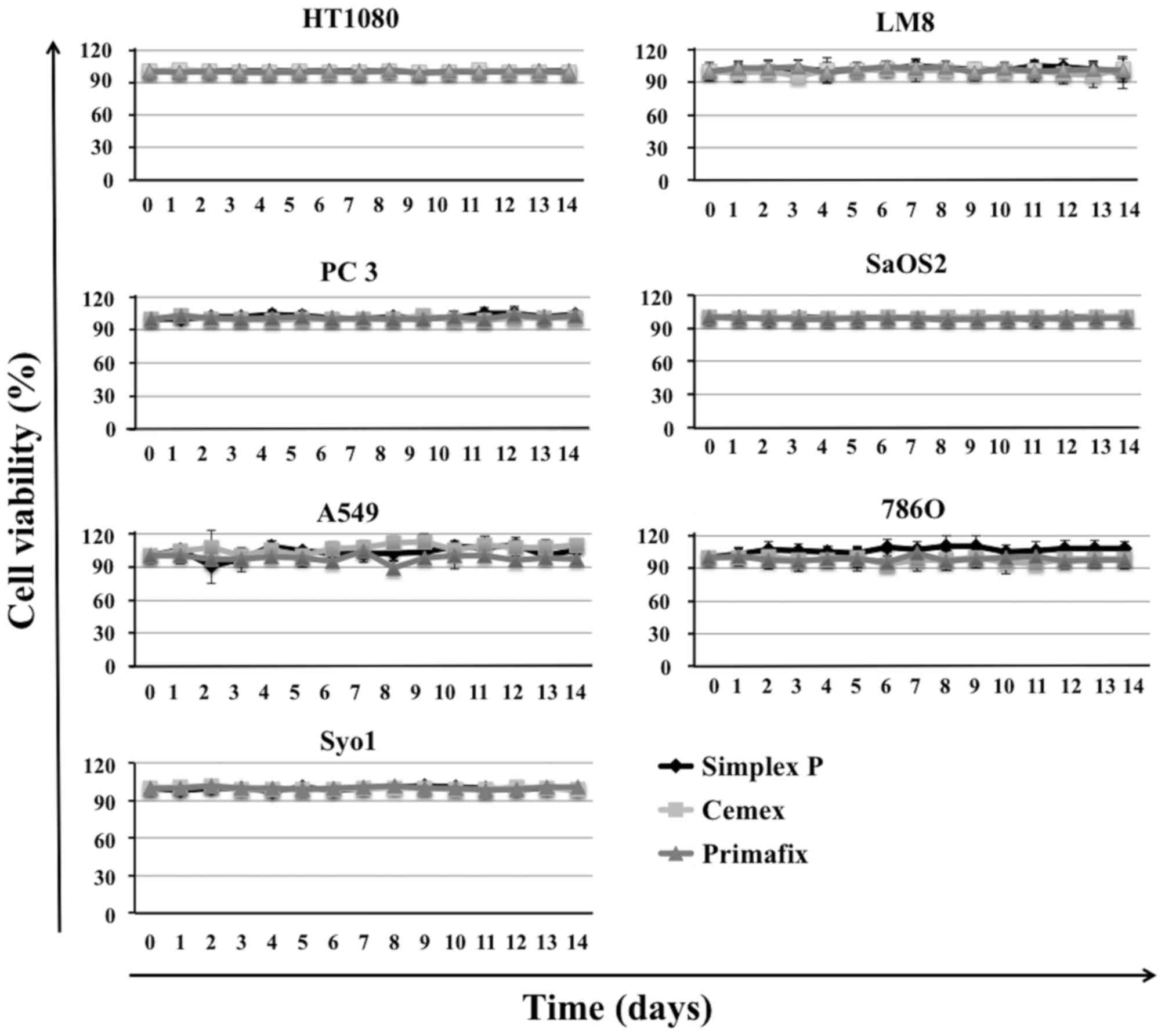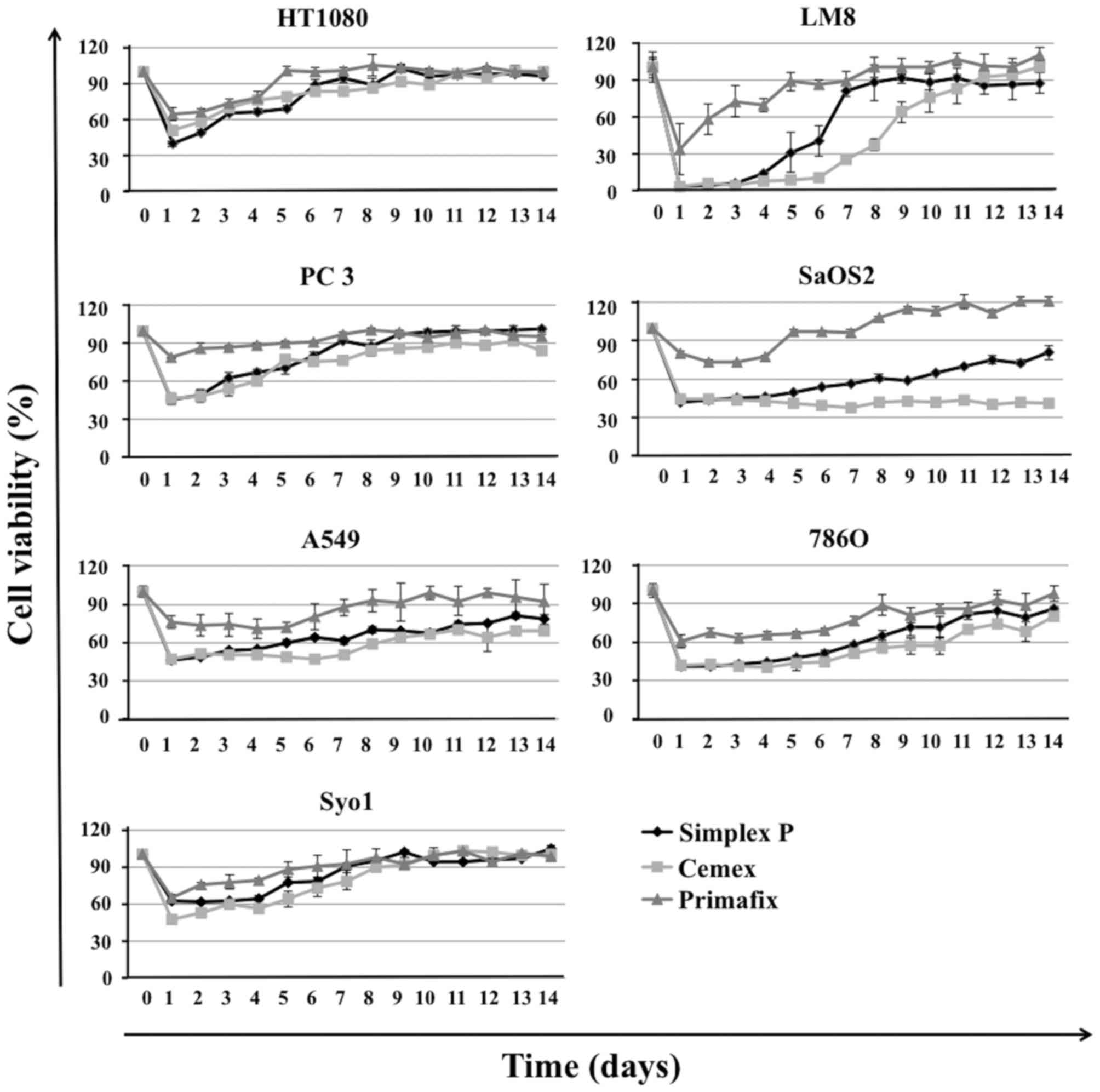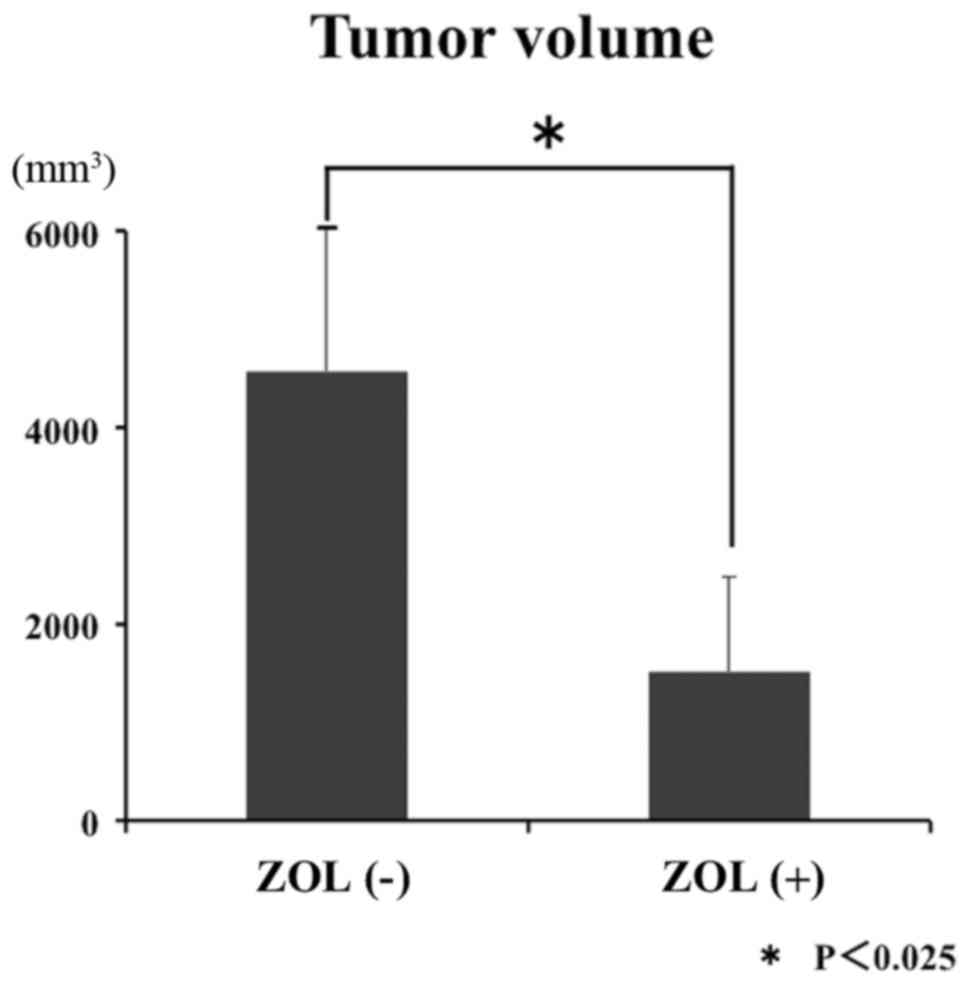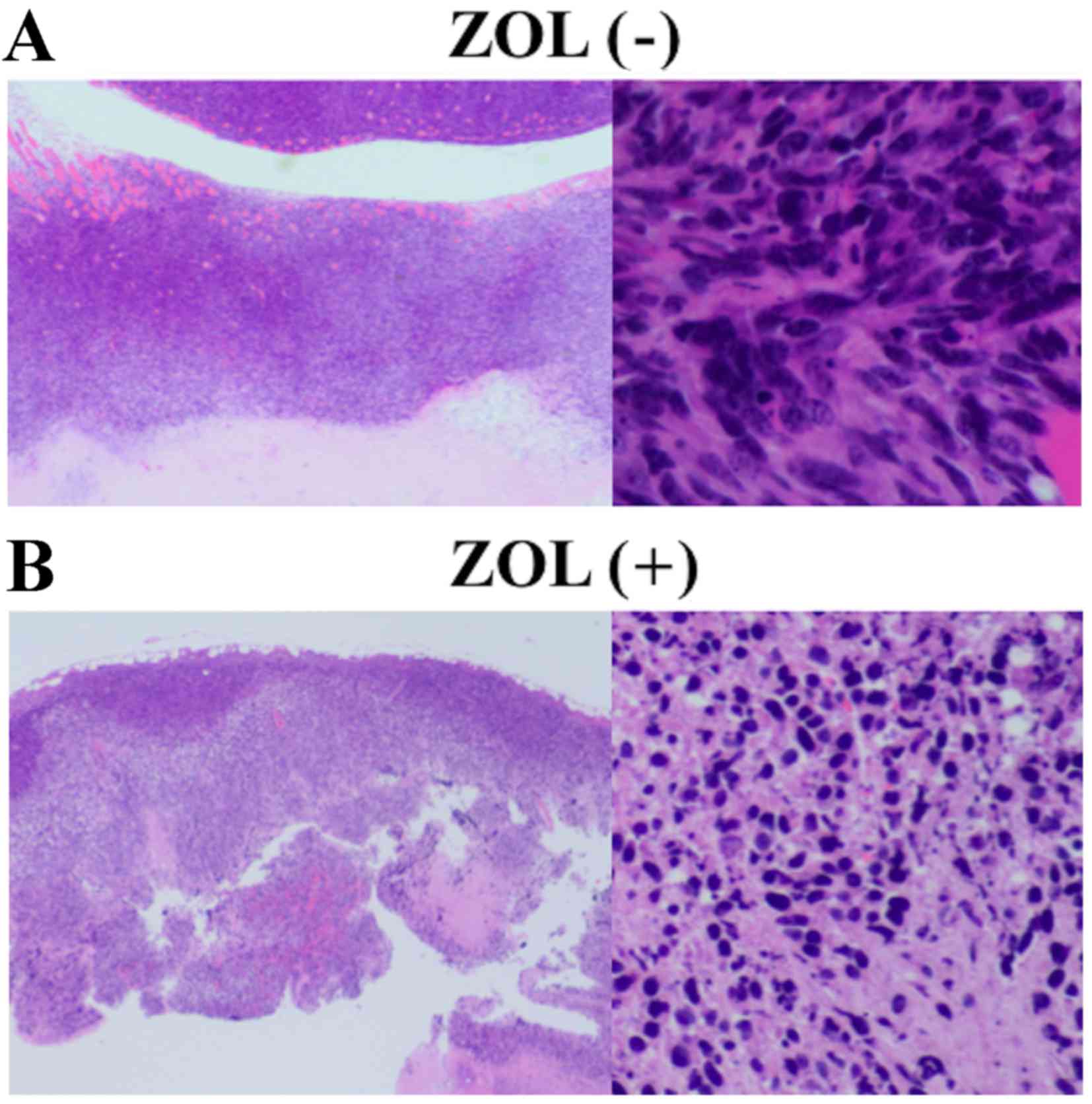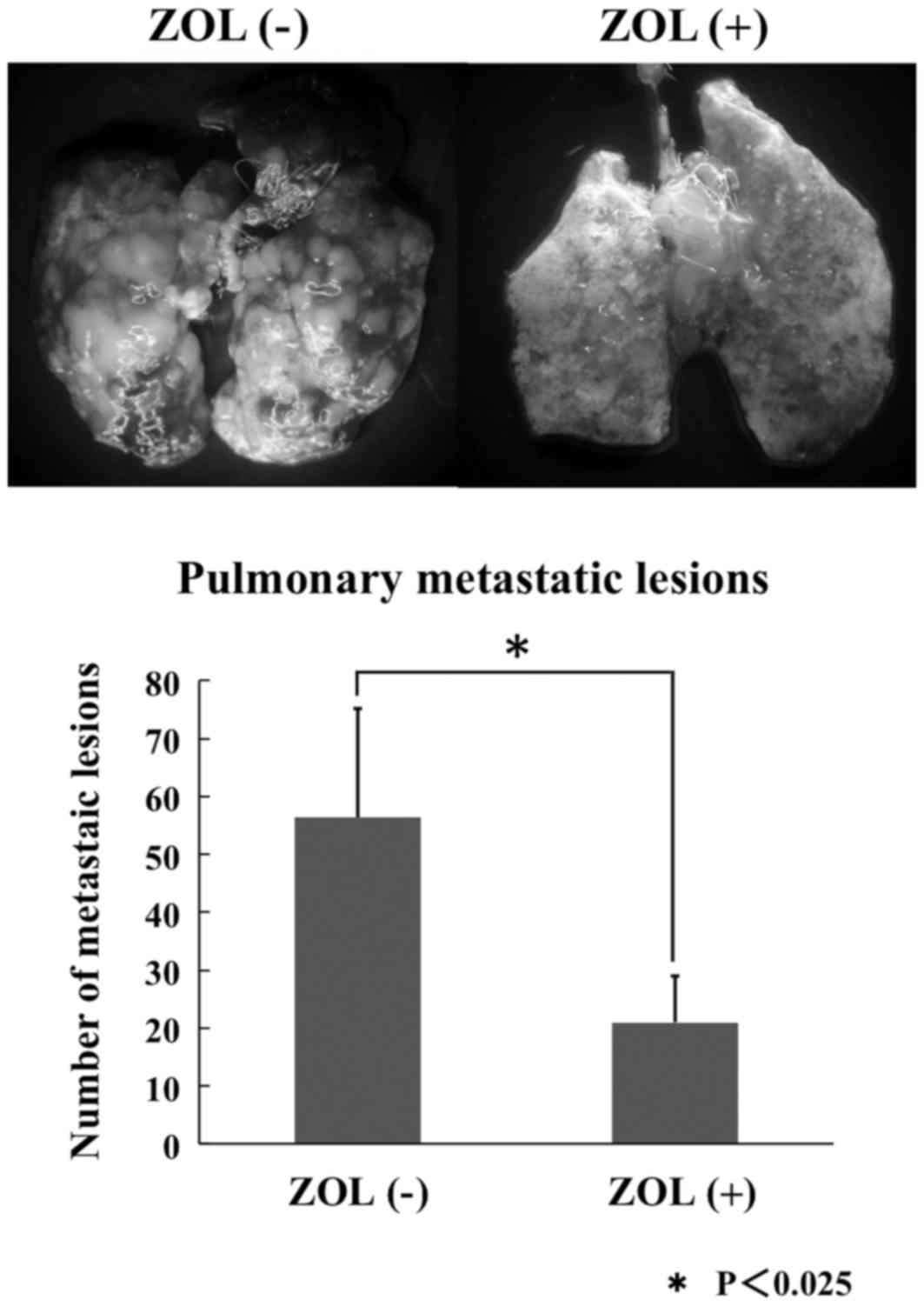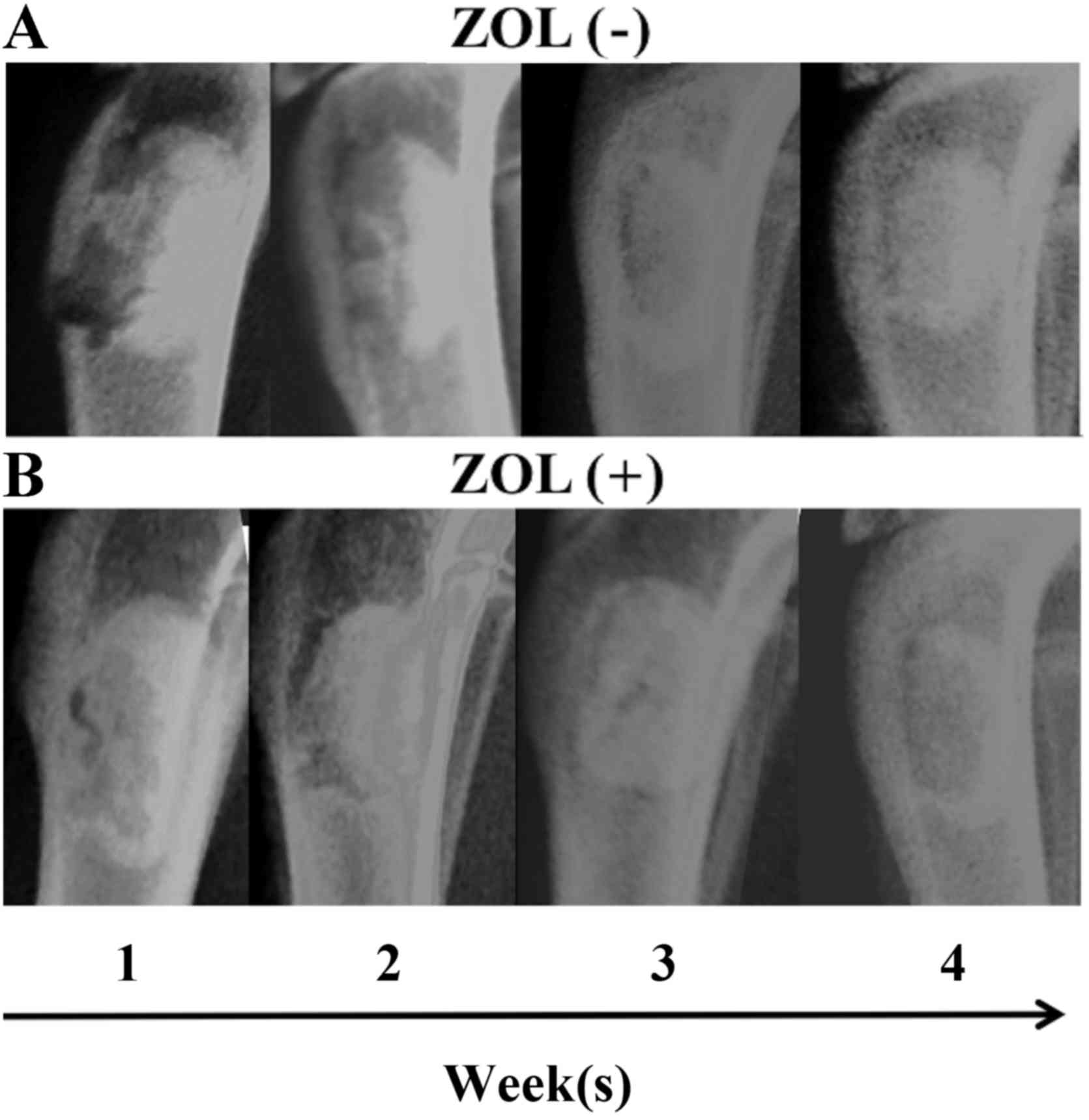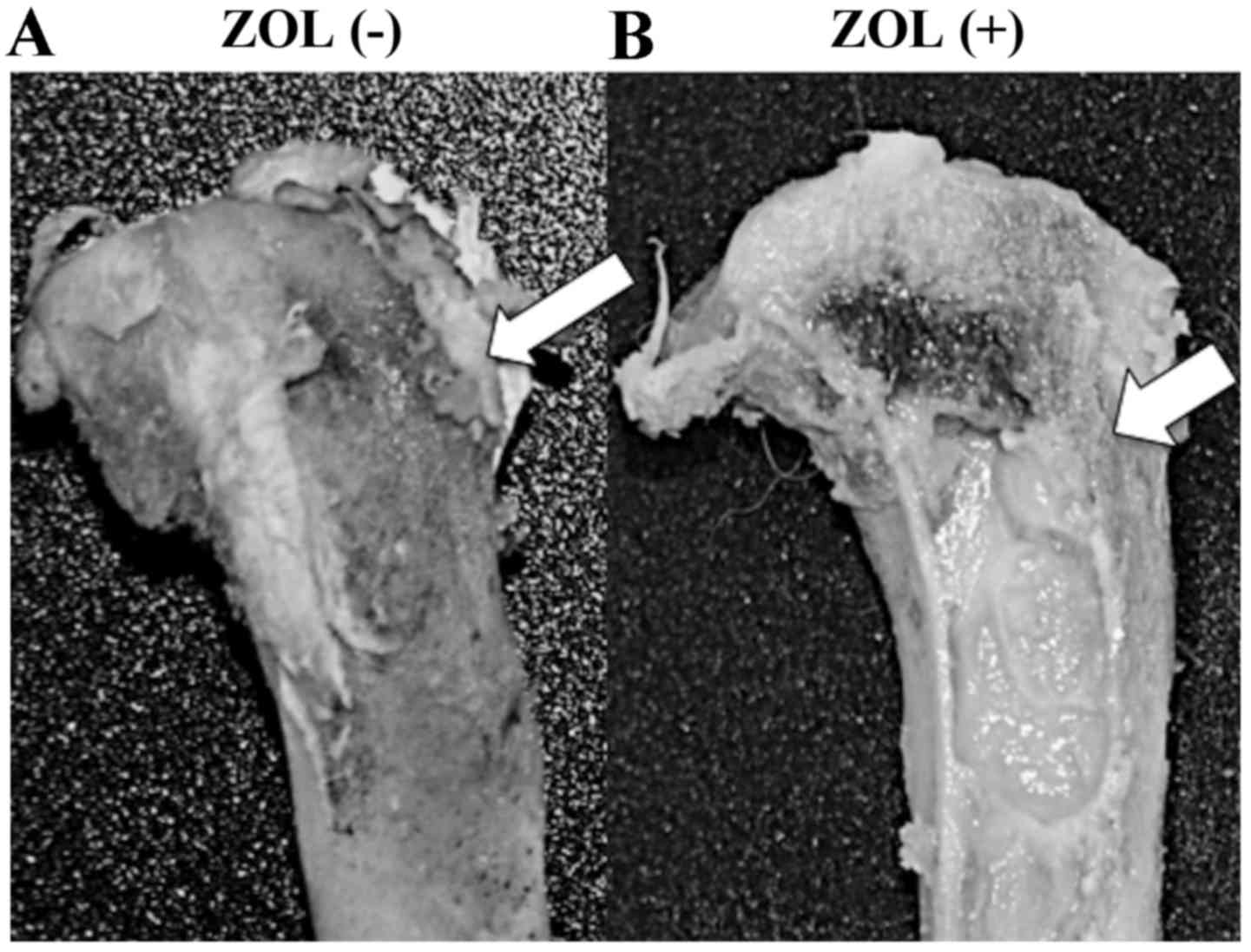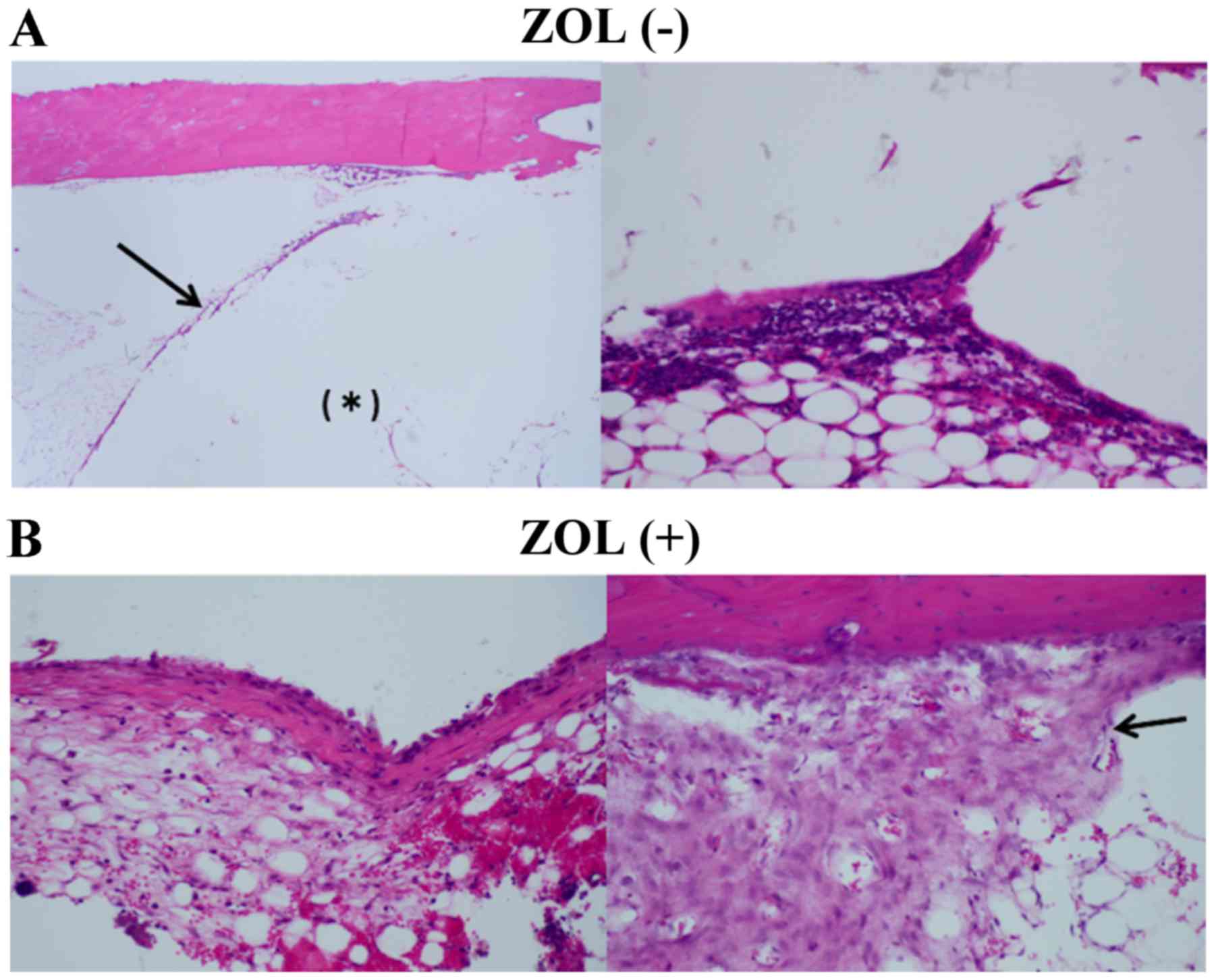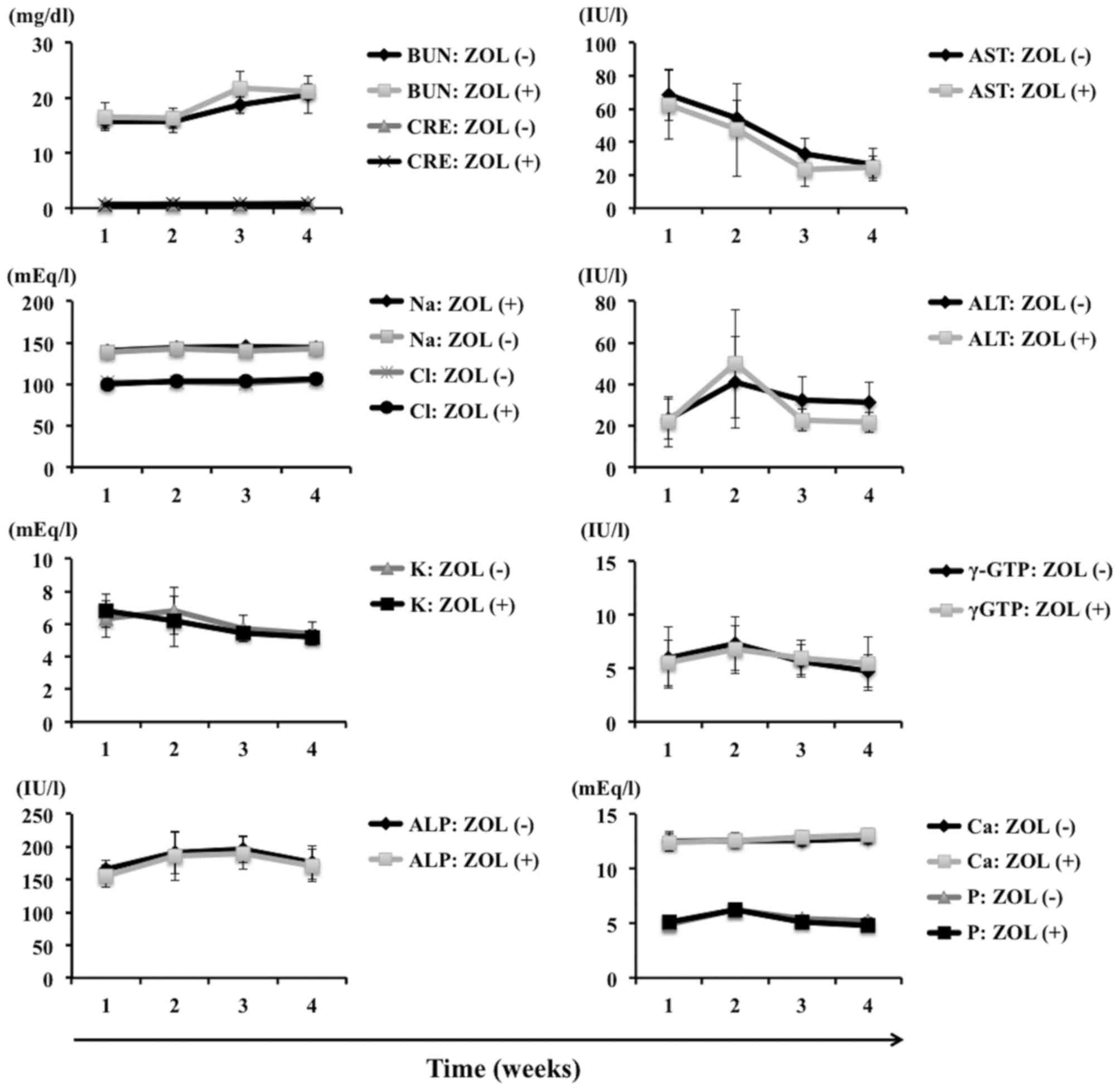|
1
|
Unni KK and Inwards CY: Dahlin's bone
tumors, General Aspects and Data on 10,165 Cases. Lippincott
Williams & Wilkins; Philadelphia, PA: pp. 3052010
|
|
2
|
Desai S and Jambhekar N:
Clinicopathological evaluation of metastatic carcinomas of bone: A
retrospective analysis of 114 cases over 10 years. Indian J Pathol
Microbiol. 38:49–54. 1995.PubMed/NCBI
|
|
3
|
Doung YC, Kenan S and Rapp T: Metastatic
lesions of the proximal femur. Bull NYU Hosp Jt Dis. 69:81–86.
2011.PubMed/NCBI
|
|
4
|
Weiss RJ, Forsberg JA and Wedin R: Surgery
of skeletal metastases in 306 patients with prostate cancer. Acta
Orthop. 83:74–79. 2012. View Article : Google Scholar : PubMed/NCBI
|
|
5
|
Wedin R, Bauer HC and Wersäll P: Failures
after operation for skeletal metastatic lesions of long bones. Clin
Orthop Relat Res. 1–139. 1999.PubMed/NCBI
|
|
6
|
Wedin R: Surgical treatment for pathologic
fracture. Acta Orthop Scand Suppl. 72:2pp1–29. 2001. View Article : Google Scholar
|
|
7
|
Chien SH, Hung SH, Cheng YM, Lin GT, Lin
SY, Ko CY, Chen LH and Chiang HC: Surgical treatment of pathologic
fracture of the femur. Kaohsiung J Med Sci. 13:556–561.
1997.PubMed/NCBI
|
|
8
|
Russell RG and Rogers MJ: Bisphosphonates:
From the laboratory to the clinic and back again. Bone. 25:97–106.
1999. View Article : Google Scholar : PubMed/NCBI
|
|
9
|
Green JR: Antitumor effects of
bisphosphonates. Cancer. 97 3 Suppl:S840–S847. 2003. View Article : Google Scholar
|
|
10
|
Lee MV, Fong EM, Singer FR and Guenette
RS: Bisphosphonate treatment inhibits the growth of prostate cancer
cells. Cancer Res. 61:2602–2608. 2001.PubMed/NCBI
|
|
11
|
Kubo T, Shimose S, Matsuo T, Tanaka K,
Yasunaga Y, Sakai A and Ochi M: Inhibitory effects of a new
bisphosphonate, minodronate, on proliferation and invasion of a
variety of malignant bone tumor cells. J Orthop Res. 24:1138–1144.
2006. View Article : Google Scholar : PubMed/NCBI
|
|
12
|
Koto K, Murata H, Kimura S, Horie N,
Matsui T, Nishigaki Y, Ryu K, Sakabe T, Itoi M, Ashihara E, et al:
Zoledronic acid inhibits proliferation of human fibrosarcoma cells
with induction of apoptosis, and shows combined effects with other
anticancer agents. Oncol Rep. 24:233–239. 2010.PubMed/NCBI
|
|
13
|
Horie N, Murata H, Nishigaki Y, Matsui T,
Segawa H, Nogawa M, Yuasa T, Kimura S, Maekawa T, Fushiki S and
Kubo T: The third-generation bisphosphonates inhibit proliferation
of murine osteosarcoma cells with induction of apoptosis. Cancer
Lett. 238:111–118. 2006. View Article : Google Scholar : PubMed/NCBI
|
|
14
|
Horie N, Murata H, Kimura S, Takeshita H,
Sakabe T, Matsui T, Maekawa T, Kubo T and Fushiki S: Combined
effects of a third-generation bisphosphonate, zoledronic acid with
other anticancer agents against murine osteosarcoma. Br J Cancer.
96:255–261. 2007. View Article : Google Scholar : PubMed/NCBI
|
|
15
|
Koto K, Horie N, Kimura S, Murata H,
Sakabe T, Matsui T, Watanabe M, Adachi S, Maekawa T, Fushiki S and
Kubo T: Clinically relevant dose of zoledronic acid inhibits
spontaneous lung metastasis in a murine osteosarcoma model. Cancer
Lett. 274:271–278. 2009. View Article : Google Scholar : PubMed/NCBI
|
|
16
|
Jagdev SP, Coleman RE, Shipman CM, Rostami
HA and Croucher PI: The bisphosphonate, zoledronic acid, induces
apoptosis of breast cancer cells: Evidence for synergy with
paclitaxel. Br J Cancer. 84:1126–1134. 2001. View Article : Google Scholar : PubMed/NCBI
|
|
17
|
Junqueira LC and Carneiro J: Basic
Histology, Text & Atlas. 10th. MacGrow-Hill Companies; New
York: pp. 1442003
|
|
18
|
Yamamoto T, Onga T, Marui T and Mizuno K:
Use of hydroxyapatite to fill cavities after excision of benign
bone tumours. J Bone Joint Surg Br. 82:1117–1120. 2000. View Article : Google Scholar : PubMed/NCBI
|
|
19
|
Uchida A, Araki N, Shinto Y, Yoshikawa H,
Kurisaki E and Ono K: The use of calcium hydroxyapatite ceramic in
bone tumour surgery. J Bone Joint Surg Br. 72:298–302.
1990.PubMed/NCBI
|
|
20
|
Shinto Y, Uchida A, Korkusuz F, Araki N
and Ono K: Calcium hydroxyapatite ceramic used as a delivery system
for antibiotics. J Bone Joint Surg Br. 74:600–604. 1992.PubMed/NCBI
|
|
21
|
Hirata M, Murata H, Takeshita H, Sakabe T,
Tsuji Y and Kubo T: Use of purified beta-tricalcium phosphate for
filling defects after curettage of benign bone tumours. Int Orthop.
30:510–513. 2006. View Article : Google Scholar : PubMed/NCBI
|
|
22
|
Itokazu M, Kumazawa S, Wada E and Wenyi Y:
Sustained release of adriamycin from implanted hydroxyapatite
blocks for the treatment of experimental osteogenic sarcoma in
mice. Cancer Lett. 107:11–18. 1996. View Article : Google Scholar : PubMed/NCBI
|
|
23
|
Asai T, Ueda T, Itoh K, Yoshioka K, Aoki
Y, Mori S and Yoshikawa H: Establishment and characterization of a
murine osteosarcoma cell line (LM8) with high metastatic potential
to the lung. Int J Cancer. 76:418–422. 1998. View Article : Google Scholar : PubMed/NCBI
|
|
24
|
Fogh J, Fogh JM and Orfeo T: One hundred
and twenty-seven cultured human tumor cell lines producing tumors
in nude mice. J Natl Cancer Inst. 59:221–226. 1977. View Article : Google Scholar : PubMed/NCBI
|
|
25
|
Rasheed S, Nelson-Rees WA, Toth EM,
Arnstein P and Gardner MB: Characterization of a newly derived
human sarcoma cell line (HT-1080). Cancer. 33:1027–1033. 1974.
View Article : Google Scholar : PubMed/NCBI
|
|
26
|
Kawai A, Naito N, Yoshida A, Morimoto Y,
Ouchida M, Shimizu K and Beppu Y: Establishment and
characterization of a biphasic synovial sarcoma cell line, SYO-1.
Cancer Lett. 204:105–113. 2004. View Article : Google Scholar : PubMed/NCBI
|
|
27
|
Williams RD, Elliott AY, Stein N and
Fraley EE: In vitro cultivation of human renal cell cancer. II.
Characterization of cell lines. In Vitro. 14:779–786. 1978.
View Article : Google Scholar : PubMed/NCBI
|
|
28
|
Ohnuki Y, Marnell MM, Babcock MS, Lechner
JF and Kaighn ME: Chromosomal analysis of human prostatic
adenocarcinoma cell lines. Cancer Res. 40:524–534. 1980.PubMed/NCBI
|
|
29
|
Giard DJ, Aaronson SA, Todaro GJ, Arnstein
P, Kersey JH, Dosik H and Parks WP: In vitro cultivation of human
tumors: Establishment of cell lines derived from a series of solid
tumors. J Natl Cancer Inst. 51:1417–1423. 1973. View Article : Google Scholar : PubMed/NCBI
|
|
30
|
Hansen MB, Nielsen SE and Berg K:
Re-examination and further development of a precise and rapid dye
method for measuring cell growth/cell kill. J Immunol Methods.
119:203–210. 1989. View Article : Google Scholar : PubMed/NCBI
|
|
31
|
Euhus DM, Hudd C, LaRegina MC and Johnson
FE: Tumor measurement in the nude mouse. J Surg Oncol. 31:229–234.
1986. View Article : Google Scholar : PubMed/NCBI
|
|
32
|
Tomayko MM and Reynolds CP: Determination
of subcutaneous tumor size in athymic (nude) mice. Cancer Chemother
Pharmacol. 24:148–154. 1989. View Article : Google Scholar : PubMed/NCBI
|
|
33
|
Jensen MM, Jorgensen JT, Binderup T and
Kjaer A: Tumor volume in subcutaneous mouse xenografts measured by
microCT is more accurate and reproducible than determined by
18F-FDG-microPET or external caliper. BMC Med Imaging. 8:162008.
View Article : Google Scholar : PubMed/NCBI
|
|
34
|
Zwolak P, Manivel JC, Jasinski P, Kirstein
MN, Dudek AZ, Fisher J and Cheng EY: Cytotoxic effect of zoledronic
acid-loaded bone cement on giant cell tumor, multiple myeloma, and
renal cell carcinoma cell lines. J Bone Joint Surg Am. 92:162–168.
2010. View Article : Google Scholar : PubMed/NCBI
|
|
35
|
Zhang S, Gangal G and Uludağ H: ‘Magic
bullets’ for bone diseases: Progress in rational design of
bone-seeking medicinal agents. Chem Soc Rev. 36:507–531. 2007.
View Article : Google Scholar : PubMed/NCBI
|
|
36
|
Yamasaki M, Yuasa T, Uehara S, Fujii Y,
Yamamoto S, Masuda H, Fukui I and Yonese J: Improvement of renal
function by changing the bone-modifying agent from zoledronic acid
to denosumab. Int J Clin Oncol. 21:1191–1195. 2016. View Article : Google Scholar : PubMed/NCBI
|
|
37
|
Kubo T, Shimose S, Matsuo T, Sakai A and
Ochi M: Efficacy of a nitrogen-containing bisphosphonate,
minodronate, in conjunction with a p38 mitogen activated protein
kinase inhibitor or doxorubicin against malignant bone tumor cells.
Cancer Chemother Pharmacol. 62:111–116. 2008. View Article : Google Scholar : PubMed/NCBI
|
|
38
|
Ottewell PD, Mönkkönen H, Jones M, Lefley
DV, Coleman RE and Holen I: Antitumor effects of doxorubicin
followed by zoledronic acid in a mouse model of breast cancer. J
Natl Cancer Inst. 100:1167–1178. 2008. View Article : Google Scholar : PubMed/NCBI
|



